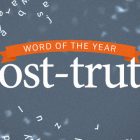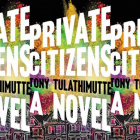What We Talk About When We Talk About Folk Tales
My reading list of late includes a lot of folk and fairy tales, reappropriated and retold: Helen Oyeyemi’s Boy, Snow, Bird, Maxine Hong Kingston’s The Warrior Woman, Terry Pratchett’s Discworld series. Call it my not-so-secret fondness for narratives that deconstruct and rewrite their source material. We are, after all, living in an age of lingering postmodernism, where absolute originality has been exposed as a sham: across centuries and cultures, we’re always retelling the same stories, one way or the other.
It’s easy to wax poetic about the enduring relevance and universality of folk tales, the most basic stories ever. Many have tried accounting for their longevity: tales have no depth, no psychology to ponder – in short, they provide pure, immediate pleasure. Or the opposite argument – tales hint at other ways of experiencing the world around us – I’m more partial to this, if only because the appearance of simplicity can be deceiving.
But the question that’s been on my mind for a while now is how and why we’ve come to recognize certain tales as perennial (and universal) and have relegated others to complete obscurity. Or, to be more exact, how we’ve codified and solidified certain interpretations of certain folk tales as the unalterable classics and neglected the cultural roots that led to their formation.
The first thing that comes to mind is that we’ve been living in a print culture for a long time now. In a world where everything can be recorded, the loss or eclipsing of certain narratives is intentional. Let me explain: whether we like it or not, our cultures assign value to the written word over the spoken one. Our contracts must be written and signed to have any kind of legal value, while oral histories are marginalized. (Not to mention, they’re slippery by nature, predicated as they are on metamorphosis and transformation: a man becomes a beast becomes a man. They will necessarily have multiple, diverging versions, which does not render them easily recordable.) In this context, if certain tales have not made their way to us through the centuries, it’s not that they’ve gotten lost – it’s that we lost them. They were either not recorded, or erased. They were expunged from our collective memories.
This gets even more complicated when you start thinking about cultural context. How many of us have heard the allegedly “Native” story about the two wolves that constantly fight within us? Which one wins? The one you feed. As it turns out, this tale is more likely than not a settler one, masquerading as indigenous wisdom. There’s also the typical short story collections that exist in this spirit, all collected tales “from China,” “from Africa.” When you’re dealing with a country that big, or an actual continent, geographical provenance may prove fundamental to the story. Apart from homogenizing diverse types of folklore, these collections almost never recontextualize the tales, or when they do, it’s most often in exoticized terms.
Take Cinderella. I’ve often heard that the original tale harks from China. Whether this is true or not, how many of us have been exposed to versions of the tale that are rooted in different cultural traditions, and that may reveal another facet of the story? And for those of us who were possibly acquainted with these versions, did we really understand how the tale fit into that cultural tradition and context?
Stripping tales of the cultural and political context that can help understand their form, values, and popularity, also means reducing them to a watered-down version. I can already hear the rebuttal: but most tales are for kids. You really want me to explain the psychoanalytic interpretation of Little Red Riding Hood, or the harsher versions of all the Grimm tales, or the complex origins of the figure of Br’er Rabbit to kids? Well, sure. It’s all a matter of age, of course, and how you phrase it. But kids are often much smarter, and more eager to learn, and more able to grasp complex concepts than one thinks. After all, most of our tales are already imbued with some kind of message or wisdom that’s meant to be epitomized through the story: we should teach kids to grasp that, as well as the mechanism behind it.
Tales are never just tales – never just fun little stories that mean nothing, where the characters are just what they are, nothing more. Baba Yaga is not exactly a mean ol’ witch. Reading The Woman Warrior without knowing much about Fa Mulan, or the context of Chinese immigration to the US, will make you miss out on crucial aspects of the book. If you don’t know how the Pyrenees mountain range has become over the centuries a space of syncretism, it’ll be hard to appreciate the profusion of tales and the figures – fairies, dragons, beasts – that haunt them.
I’m not making a case to ditch Snow White & co. What I guess I’m trying to say is: folk tales (and their manifestations within more ‘literary’ works) are not flimsy, superficial narratives. They speak to something deep within us, and participate in the making and maintaining of communities. In an age where mainstream media most often feeds us Disneyfied folklore, but also where the push for diversity and cultural awareness is becoming increasingly important, we need to read more folk tales, while understanding where they come from.
And that’s what’s wonderful about books like Boy Snow Bird or The Woman Warrior or the Discworld series. They add to the long tradition of riffing on tales, reopening them up to allow them to reveal yet another layer, all the while subtly inciting us to try and understand how the original versions of the tale might illuminate its retelling. In short, beyond the postmodern story, and into the folklore wild.



